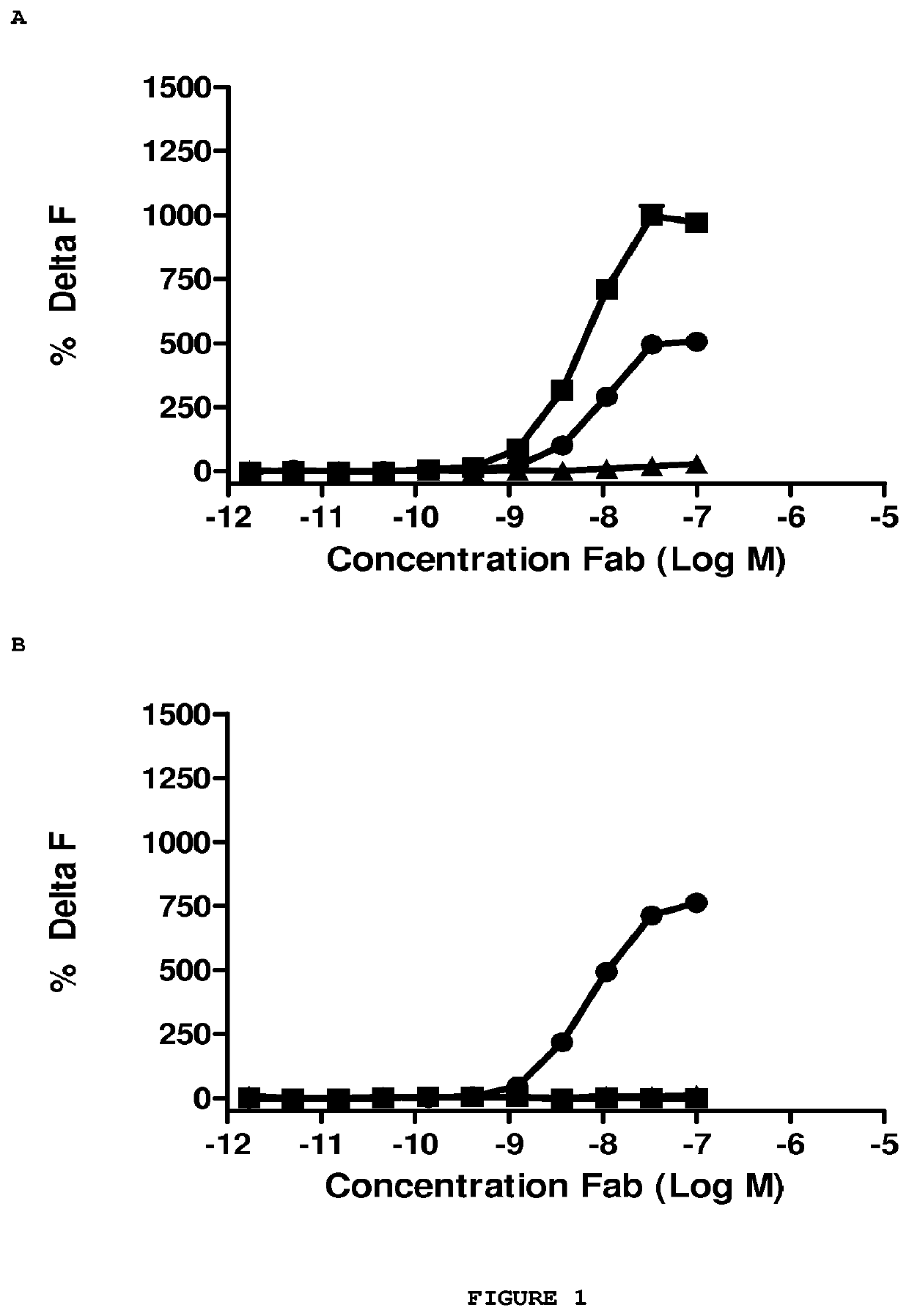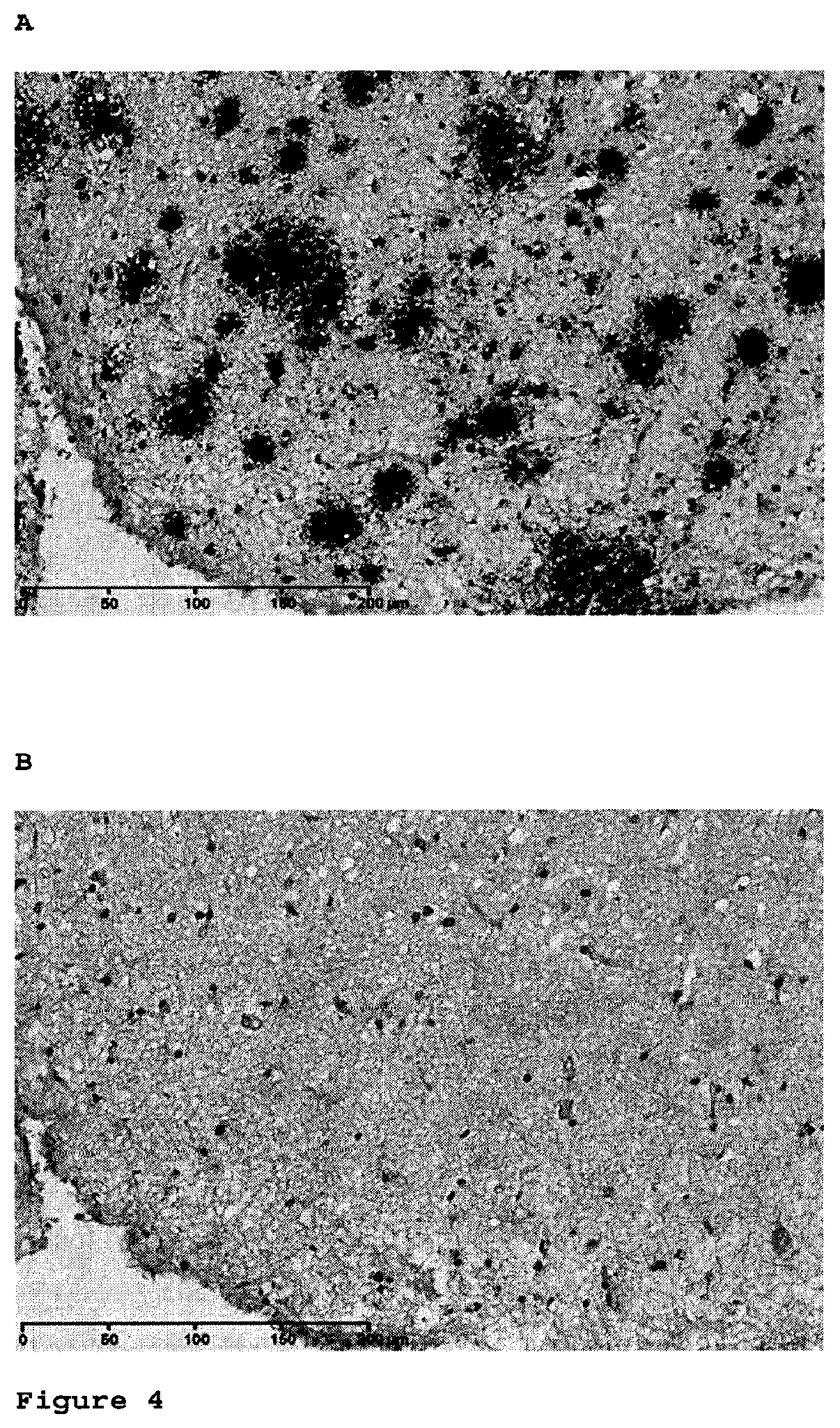Antibodies to amyloid beta
a technology of amyloid beta and amyloid beta, which is applied in the field of antibodies, can solve the problems of neurotransmitter decline, cholinergic neurons are particularly vulnerable, and personal changes, and achieve the effect of preventing cognitive decline and reversing cognitive declin
- Summary
- Abstract
- Description
- Claims
- Application Information
AI Technical Summary
Benefits of technology
Problems solved by technology
Method used
Image
Examples
example 1
Anti-Amyloid Beta 1-42 Specific Antibody Generation and Lead Selection
1.1 Formulation of Amyloid Beta Peptides
[0319]Biotinylated human Amyloid beta 1-42 peptide (rPeptide, USA; cat: A1117 or Bachem AG, Switzerland; cat: H-5642) was resuspended to 1 mg / ml in 1% ammonium hydroxide solution (v / v) and stored in aliquots at −80° C. until required. An identical procedure was followed for unlabelled human Amyloid beta 1-42 peptide (Anaspec, USA; cat: 64129), unlabelled human Amyloid beta 1-40 peptide (rPeptide, USA; cat: A1155), biotinylated human Amyloid beta 1-40 peptide (rPeptide, USA; cat: A111 or Bachem AG, Switzerland; cat: H-5914), biotinylated murine Amyloid beta 1-42 peptide (Anaspec, USA; cat: 61718-01) and biotinylated murine Amyloid beta 1-40 peptide (Anaspec, USA; cat: 61717).
1.2 Selections
[0320]The Fab310-Lambda phage display library (Dyax, USA) cloned into a phagemid vector based on the filamentous phage M13 was used for selections (Hoet et al., 2005). Anti-Amyloid beta 1-42...
example 2
Antibody Optimisation of Abet0007 Through Directed Mutation of the Complementarity Determining Regions 3 (CDR3)
[0351]2.1 Conversion of Abet0007 Parent Clone to scFv Format
[0352]The parent clone was converted from IgG2 format to single chain variable fragment (scFv) format in preparation for affinity optimisation. The codon-optimised variable heavy (VH) and variable light (VL) domains were amplified separately from their respective IgG vectors with the addition of specific cloning sites and a flexible linker region. Recombinatorial PCR was then performed to generate a complete scFv construct, which was cloned into the pCantab10.5 phagemid vector, essentially as described in Vaughan et al. (Vaughan et al., 1996). The pCantab10.5 vector is a modified version of the pCantab6 vector that contains additional restriction sites to facilitate the addition of tags other than the standard His and myc tags.
2.2 Optimisation of Abet0007 by Targeted Mutagenesis
[0353]The lead antibody (Abet0007) wa...
example 3
Antibody Optimisation of Abet0144-GL Through Mutation of all Six CDRs Including Flanking Vernier Residues
[0388]3.1 Conversion of Abet0144-GL Parent Clone to scFv Format Compatible with Ribosome Display
[0389]The parent clone was converted from IgG1-TM format to single chain variable fragment (scFv) format in preparation for affinity optimisation. The codon-optimised variable heavy (VH) and variable light (VL) domains were amplified separately from their respective IgG vectors with the addition of specific cloning sites and a flexible linker region. Recombinatorial PCR was then performed to generate a complete scFv construct, which was cloned into a modified pUC vector (pUC-RD) containing the structural features necessary for ribosome display. These features include a 5′ and 3′ stem loop to prevent degradation of the mRNA transcript by exonucleases, a Shine-Dalgarno sequence to promote ribosome binding to the mRNA transcript, and a geneIII spacer that allows the translated scFv molecu...
PUM
| Property | Measurement | Unit |
|---|---|---|
| Volume | aaaaa | aaaaa |
| Volume | aaaaa | aaaaa |
| Volume | aaaaa | aaaaa |
Abstract
Description
Claims
Application Information
 Login to View More
Login to View More - R&D Engineer
- R&D Manager
- IP Professional
- Industry Leading Data Capabilities
- Powerful AI technology
- Patent DNA Extraction
Browse by: Latest US Patents, China's latest patents, Technical Efficacy Thesaurus, Application Domain, Technology Topic, Popular Technical Reports.
© 2024 PatSnap. All rights reserved.Legal|Privacy policy|Modern Slavery Act Transparency Statement|Sitemap|About US| Contact US: help@patsnap.com










